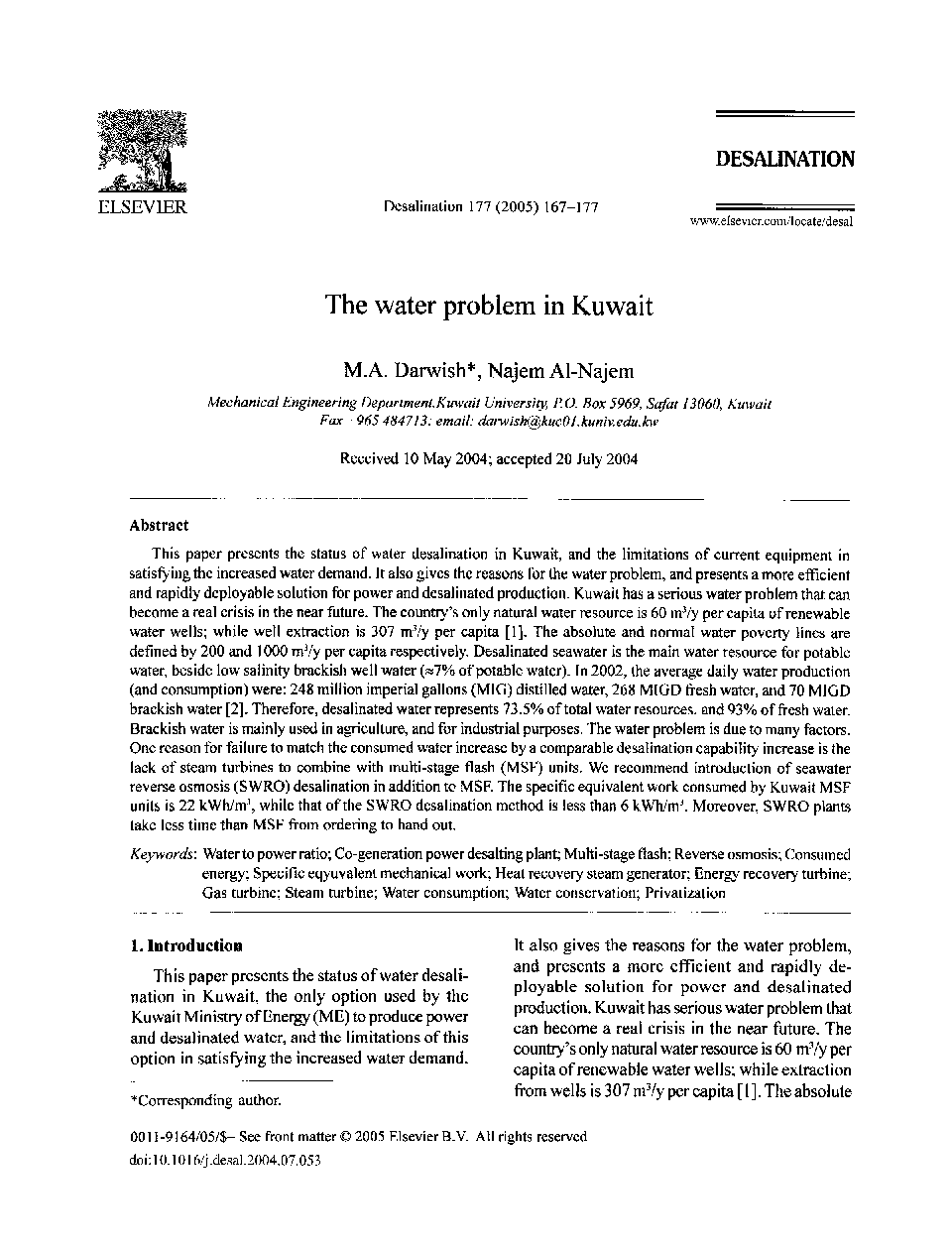| Article ID | Journal | Published Year | Pages | File Type |
|---|---|---|---|---|
| 9681180 | Desalination | 2005 | 11 Pages |
Abstract
This paper presents the status of water desalination in Kuwait, and the limitations of current equipment in satisfying the increased water demand. It also gives the reasons for the water problem, and presents a more efficient and rapidly deployable solution for power and desalinated production. Kuwait has a serious water problem that can become a real crisis in the near future. The country's only natural water resource is 60 m3/y per capita of renewable water wells; while well extraction is 307 m3/y per capita [1]. The absolute and normal water poverty lines are defined by 200 and 1000 m3/y per capita respectively. Desalinated seawater is the main water resource for potable water, beside low salinity brackish well water (â7% of potable water). In 2002, the average daily water production (and consumption) were: 248 million imperial gallons (MIG) distilled water, 268 MIGD fresh water, and 70 MIGD brackish water [2]. Therefore, desalinated water represents 73.5% of total water resources, and 93% of fresh water. Brackish water is mainly used in agriculture, and for industrial purposes. The water problem is due to many factors. One reason for failure to match the consumed water increase by a comparable desalination capability increase is the lack of steam turbines to combine with multi-stage flash (MSF) units. We recommend introduction of seawater reverse osmosis (SWRO) desalination in addition to MSF. The specific equivalent work consumed by Kuwait MSF units is 22 kWh/m3, while that of the SWRO desalination method is less than 6 kWh/m3. Moreover, SWRO plants take less time than MSF from ordering to hand out.
Keywords
Related Topics
Physical Sciences and Engineering
Chemical Engineering
Filtration and Separation
Authors
M.A. Darwish, Najem Al-Najem,
